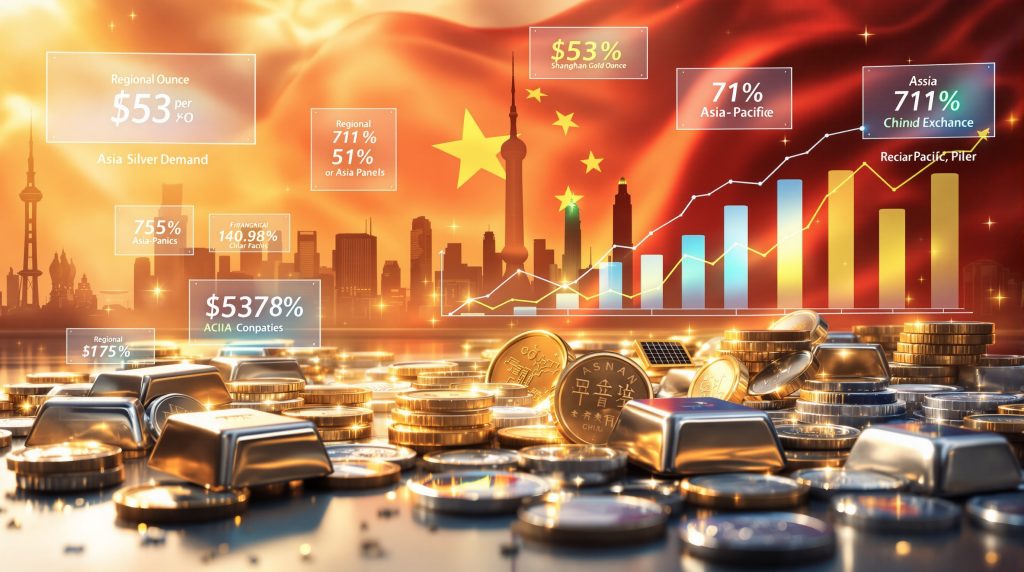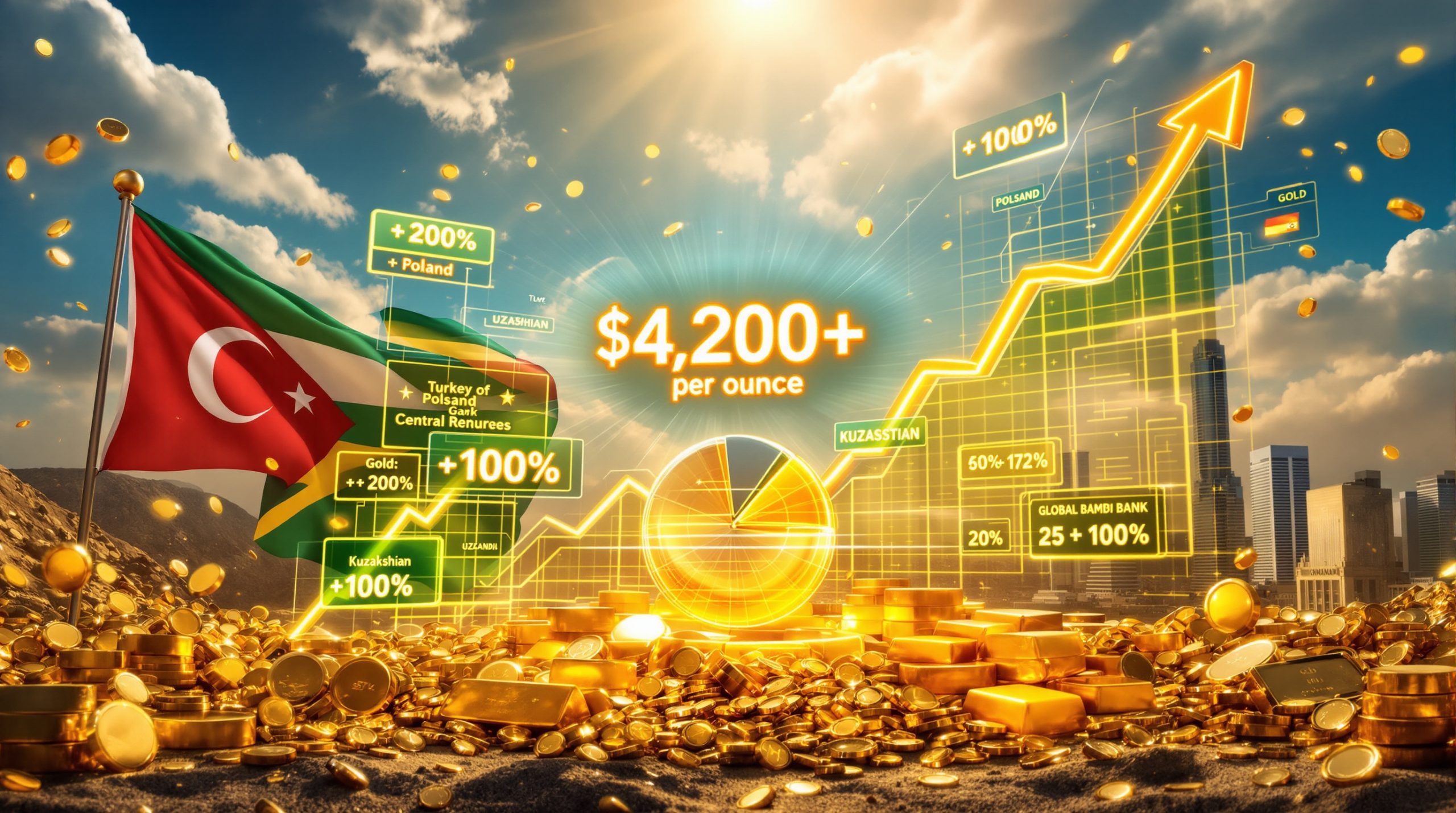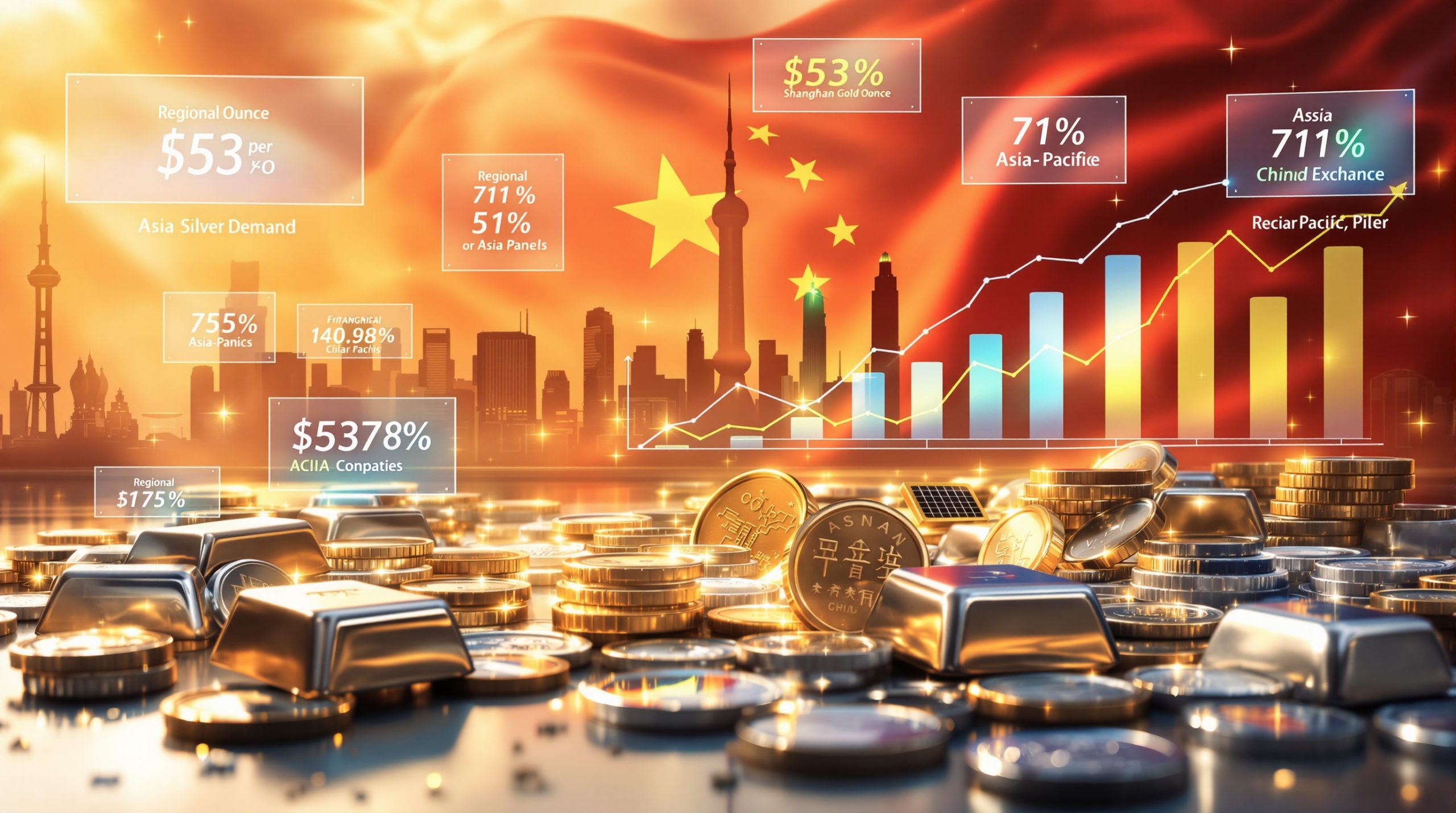Understanding the Current Silver Market Transformation
The precious metals landscape has experienced a seismic shift, with the silver price rally in Asia driving silver prices beyond $50 per ounce to reach new heights in October 2025. This dramatic ascent represents far more than a temporary market spike. It signals a fundamental restructuring of global silver markets, where Asian trading centres have emerged as the dominant force in price determination.
Unlike previous rallies that originated primarily from Western financial centres, the current surge reflects a profound transformation in market dynamics. Furthermore, silver squeeze strategies have gained momentum as Asian exchanges, particularly Shanghai, have evolved from regional players into the primary drivers of silver price discovery. This shift marks a historic transition that may permanently alter how precious metals are valued worldwide.
The scale of this transformation becomes evident when examining key market metrics. Physical silver demand has intensified across Asian markets, with Shanghai Gold Exchange reporting unprecedented trading volumes throughout 2025. Monthly deliveries frequently exceeded one million kilograms, while single-month trading volumes reached eight million kilograms, representing approximately 25% of global annual supply compressed into just 30 days.
Industrial consumption patterns have also evolved dramatically. The Asia-Pacific region now accounts for the majority of global silver consumption, driven by massive electronics manufacturing operations and aggressive renewable energy deployment. Countries like China, South Korea, and Japan require enormous quantities of silver for semiconductor production, solar panel manufacturing, and advanced electronic components.
Investment behaviour has shifted equally dramatically. Asian investors have demonstrated an overwhelming preference for physical silver ownership over paper derivatives, creating sustained demand pressure that traditional futures markets struggle to satisfy. This preference for tangible assets over financial instruments has created a supply-demand imbalance that continues driving prices higher.
How Does Asia's Silver Rally Compare to Historical Price Movements?
The current silver surge exhibits fundamental differences from the explosive rallies of 1980 and 2011, distinguishing it through both duration and underlying market structure. Previous bull markets were characterised by rapid, speculative-driven price increases followed by equally dramatic collapses. The 1980 Hunt Brothers manipulation created artificial scarcity, while the 2011 rally emerged from post-financial crisis monetary policies.
Historical analysis reveals distinct patterns across major silver rallies:
| Rally Period | Starting Price | Peak Price | Duration | Primary Catalysts |
|---|---|---|---|---|
| 1970-1980 | $2.00 | $49.45 | 10 years | Inflation, speculation |
| 2002-2011 | $4.50 | $49.82 | 9 years | Monetary expansion |
| 2020-2025 | $18.00 | $53.00+ | 5+ years | Industrial demand shift |
The 1980 rally began from approximately $1.50 per ounce in the early 1970s, driven initially by inflation concerns following oil price shocks. However, the surge to $49.45 on January 18, 1980, resulted primarily from the Hunt brothers' attempted market corner, accumulating an estimated 100-200 million ounces. When regulatory intervention forced liquidation, prices collapsed to $10.80 by March 1980.
The 2011 surge followed different dynamics. Silver began climbing from $8.88 in November 2008, reaching $49.82 on April 28, 2011. This rally coincided with quantitative easing policies, European sovereign debt concerns, and massive investment flows into precious metals ETFs. Unlike 1980's manipulation-driven collapse, the 2011 correction resulted from improving economic conditions and policy normalisation.
Today's rally demonstrates unprecedented characteristics. Rather than speculative excess, the current surge reflects structural changes in global supply chains and manufacturing patterns. Consequently, global silver squeeze impact has been felt across multiple financial sectors, as Asian markets now dominate both consumption and price discovery, creating a fundamentally different dynamic than Western-led previous rallies.
The sustainability factor also differs significantly. Previous rallies were vulnerable to policy changes or regulatory intervention. However, the current surge stems from industrial necessity and geographic demand shifts that cannot be easily reversed through policy adjustments or market intervention.
Why Are Asian Markets Leading Silver Price Discovery?
The Shanghai Gold Exchange has emerged as the world's largest physical silver trading platform, fundamentally transforming global price determination mechanisms. Unlike Western futures markets that primarily trade paper contracts with minimal physical delivery, the SGE facilitates actual metal transactions, creating authentic price discovery based on real supply and demand dynamics.
Trading volume statistics demonstrate this transformation clearly. The SGE recorded trading volume increases of 55% year-over-year in 2024, while Western futures exchanges showed only 15% growth. This disparity reflects the growing importance of physical markets over derivative trading in determining silver prices.
The exchange's delivery mechanisms create unique market dynamics:
• Physical Settlement Emphasis: Unlike COMEX futures where less than 1% result in physical delivery, SGE transactions predominantly involve actual metal exchange
• Real-Time Supply Response: Physical trading reflects immediate availability constraints rather than speculative positioning
• Regional Premium Discovery: Local supply-demand imbalances create price premiums that influence global markets
• Currency Integration: Direct yuan-denominated trading reduces foreign exchange complications for Asian participants
Backwardation has become a persistent market feature, with spot prices consistently trading $1.50 above futures contracts. This unusual condition indicates market participants prefer immediate possession over future delivery promises, suggesting either supply constraints or overwhelming physical demand that futures markets cannot adequately address.
The technical implications of backwardation extend beyond simple supply concerns. When spot prices exceed futures consistently, it signals that traditional price discovery mechanisms may be breaking down. Furthermore, silver market stress has become evident as Western futures markets, which historically determined silver prices through speculative trading and hedging activities, appear increasingly disconnected from Asian physical markets where actual consumption occurs.
Market participants report distinct pricing behaviours during Asian trading hours. Price gaps frequently occur overnight when Western markets close and Asian sessions begin, with silver opening significantly higher than previous Western closing prices. This pattern suggests that authentic demand pressure emerges when physical market participants become active, rather than when speculative derivative traders dominate.
What Industrial Factors Are Fueling Asian Silver Demand?
Electronics manufacturing represents the largest driver of Asian silver consumption, with the region producing approximately 60% of global semiconductors and 78% of solar panels. Each manufacturing process requires substantial silver quantities due to the metal's unique properties: the highest electrical conductivity (63.0 × 10⁶ S/m), superior thermal conductivity (429 W/m·K), and exceptional reflectivity characteristics essential for advanced electronics.
Solar photovoltaic demand has created particularly intense silver consumption patterns. Despite technological improvements reducing silver content per panel from 130mg per cell in 2016 to approximately 65mg currently, massive production increases have driven net consumption growth. China's dominance in solar manufacturing means the majority of this silver demand concentrates in Asian markets.
Regional Industrial Consumption Patterns
• Semiconductor Manufacturing: Advanced chip production requires high-purity silver for interconnects and thermal management components
• 5G Infrastructure: Network equipment deployment demands significant silver quantities for enhanced conductivity requirements
• Electric Vehicle Components: Battery systems, charging infrastructure, and power electronics all incorporate substantial silver content
• Renewable Energy Systems: Beyond solar panels, wind turbines and energy storage systems require silver for electrical connections and control systems
The technology sector's silver intensity has increased rather than decreased over time. While individual components may use less silver through technological improvements, the proliferation of electronic devices and infrastructure has created net demand growth. In addition, smartphones, tablets, automotive electronics, and industrial equipment all contribute to cumulative consumption increases.
Manufacturing concentration amplifies demand impacts. When the majority of global electronics production occurs within specific geographic regions, supply disruptions or demand surges can create disproportionate price effects. Asian manufacturers' procurement patterns now significantly influence global silver pricing, particularly during peak production periods.
Supply chain considerations have also evolved. Asian manufacturers increasingly prefer regional silver suppliers to reduce transportation costs and delivery risks. This preference has created stronger linkages between local silver markets and manufacturing demand, intensifying the correlation between production schedules and silver prices.
How Are Investment Patterns Changing in Asian Silver Markets?
Physical investment demand has surged dramatically across Asian markets, with investors demonstrating overwhelming preference for tangible silver over paper derivatives. This shift reflects cultural attitudes toward wealth preservation and growing scepticism about financial market instruments following various economic disruptions.
Investment demand patterns show distinct regional characteristics:
Physical Silver Preference Drivers
-
Cultural Wealth Preservation: Traditional Asian views of precious metals as family wealth storage tools
-
Currency Hedge Protection: Silver ownership provides protection against currency devaluation risks
-
Inflation Protection: Physical assets maintain purchasing power during inflationary periods
-
Financial System Independence: Tangible assets offer protection from banking system disruptions
The transformation extends beyond retail investors to institutional participants. Asian pension funds, insurance companies, and sovereign wealth funds have increased precious metals allocations significantly. However, unlike Western institutions that often invest through ETFs or futures contracts, Asian institutions frequently prefer direct physical ownership or allocated storage arrangements.
Manufacturing companies have also altered procurement strategies, maintaining larger silver inventories as supply chain insurance. This industrial hoarding behaviour creates additional investment demand that compounds traditional investor purchases, creating sustained upward pressure on prices.
"The convergence of industrial necessity and investment demand has created a self-reinforcing cycle where higher prices attract more investment attention while supply constraints intensify scarcity perceptions."
Premium pricing for physical silver in Asian markets reflects this demand intensity. Local dealers frequently charge premiums of 5-10% above international spot prices, indicating strong regional demand that cannot be satisfied through normal distribution channels. These premiums create arbitrage opportunities that attract additional metal flows into Asian markets.
What Supply Chain Disruptions Are Affecting Silver Availability?
Global silver mining faces unprecedented challenges that constrain supply growth despite elevated prices. Declining ore grades at major mining operations have created a structural problem where producers must process increasing amounts of rock to maintain production levels, driving costs higher while reducing efficiency.
According to U.S. Geological Survey data, world mine production reached approximately 27,000 metric tons in 2023, with Mexico leading at 6,100 metric tons, followed by China at 3,600 metric tons and Peru at 3,200 metric tons. However, production growth has stagnated despite strong prices, indicating supply-side constraints that prevent rapid response to demand increases.
Critical Supply Constraints
• Byproduct Nature: Approximately 72% of silver production comes as a byproduct of mining other metals, making supply dependent on lead, zinc, copper, and gold production decisions
• Long Development Timelines: New mine development requires 10-15 years from discovery to production, preventing quick supply responses
• Environmental Regulations: Increasing compliance costs and permitting delays restrict new project development
• Energy Cost Increases: Rising energy prices significantly impact mining economics, particularly for energy-intensive processing operations
Recycling limitations compound supply challenges. Unlike gold, which maintains high recycling rates due to jewellery and investment applications, silver recycling faces technical obstacles. Industrial applications often consume silver permanently through dispersion in electronic components, making economic recovery impossible. Old scrap recycling rates remain only 20-25%, while new scrap achieves 80-90% recovery rates.
Geopolitical tensions have created additional supply uncertainties. Furthermore, tariff effects on silver have become more pronounced as mining operations in several major producing countries face regulatory changes, taxation increases, or political instability that threatens consistent production. These factors create supply risk premiums that support higher prices even when immediate shortages do not exist.
The combination of inelastic supply response and surging Asian demand has created a structural imbalance that traditional market mechanisms struggle to resolve. Unlike other commodities where high prices quickly incentivise increased production, silver's unique supply characteristics mean that demand growth cannot be easily accommodated through supply expansion.
Are Current Silver Prices Sustainable at These Levels?
Technical analysis indicators suggest silver has extended significantly above historical norms, with prices trading approximately 30% above the 200-day moving average in October 2025. Silver market conditions have shown extreme volatility, as historical data shows this level of deviation has occurred only ten times previously, with each episode followed by corrections averaging 24%. However, the current market structure may invalidate traditional technical analysis frameworks.
Price Sustainability Factors
Supporting Elements:
• Industrial Price Floors: Primary silver mining cash costs averaging $11-14 per ounce, with all-in sustaining costs of $20-25 per ounce, create natural price support levels
• Demand Inelasticity: Silver represents less than 1% of final product costs in electronics, meaning industrial demand shows minimal price sensitivity
• Supply Constraints: Long-term supply deficits and limited new mine development support elevated pricing
• Asian Market Structure: Physical market dominance reduces speculative volatility that characterised previous rallies
Risk Factors:
• Historical Precedent: Previous rallies to similar levels experienced significant corrections
• Economic Slowdowns: Reduced industrial production could temporarily decrease demand
• Technological Substitution: Alternative materials or thrifting technologies could reduce silver intensity
• Policy Interventions: Regulatory changes or market interventions could disrupt trading patterns
The sustainability question ultimately depends on whether current demand patterns represent permanent structural changes or temporary market dislocations. If Asian industrial growth and investment demand continue at current levels, elevated prices may persist despite periodic corrections.
Market backwardation provides additional insight into sustainability prospects. When spot prices consistently exceed futures, it indicates market participants believe current scarcity conditions will persist rather than resolve quickly. This signal suggests that fundamental supply-demand imbalances support current pricing levels.
Comparative analysis with gold markets offers perspective on precious metals sustainability at elevated levels. Consequently, gold-silver analysis indicates that gold has maintained prices well above historical averages for extended periods when supported by structural demand changes, suggesting silver could similarly sustain higher pricing given appropriate fundamental support.
What Does This Mean for Global Silver Market Dynamics?
The transformation of silver price discovery from Western futures exchanges to Asian physical markets represents a fundamental shift in global commodities trading. This change extends beyond silver to reflect broader economic rebalancing where Asian consumption patterns increasingly determine global pricing mechanisms across multiple commodities.
Traditional arbitrage relationships between regional markets have weakened as Asian markets operate with different fundamental drivers than Western exchanges. Futures markets in New York and London increasingly respond to Asian price movements rather than leading them, reversing decades of established trading patterns.
Structural Market Changes
-
Price Discovery Leadership: Asian physical markets now establish silver prices during regional trading hours
-
Delivery Mechanisms: Emphasis on physical settlement creates different supply-demand dynamics
-
Participant Composition: Manufacturing companies and physical investors dominate rather than speculative traders
-
Currency Integration: Direct local currency trading reduces foreign exchange complications
These changes create new challenges for global market participants accustomed to Western-dominated pricing systems. International mining companies must now consider Asian market dynamics when making production and investment decisions. Financial institutions require different hedging strategies that account for physical market realities rather than derivative trading patterns.
The implications extend to monetary policy and central bank operations. As Asian silver markets gain influence, Western central banks have reduced ability to influence precious metals prices through traditional policy tools. This diminished influence represents part of broader global economic power shifts from West to East.
Investment strategy requires fundamental reconsideration in this new environment. Traditional Western market indicators may provide incomplete or misleading information about silver price rally in Asia directions when Asian markets drive price discovery. Investors must now monitor Asian economic data, manufacturing trends, and regional policy developments to understand silver market dynamics effectively.
The precedent set by silver market transformation may extend to other commodities where Asia represents the dominant consumption region. Copper, aluminium, and other industrial metals could experience similar shifts from Western financial market pricing toward Asian physical market determination.
This evolution suggests a permanent restructuring of global commodity markets rather than a temporary disruption. As Asian economies continue growing and their financial markets develop, Western dominance in commodity price setting may continue declining across multiple sectors, fundamentally altering how global trade and investment operate.
Disclaimer: This analysis involves market predictions and forecasts that are inherently uncertain. Silver prices are highly volatile and can fluctuate dramatically based on numerous factors including economic conditions, geopolitical events, and market sentiment. Past performance does not guarantee future results, and investors should conduct thorough research and consider their risk tolerance before making investment decisions. The information provided is for educational purposes and should not be considered as financial advice.
Ready to Capitalise on Asian Silver Market Opportunities?
Discovery Alert's proprietary Discovery IQ model delivers real-time alerts on significant mineral discoveries across the ASX, helping subscribers identify actionable opportunities in precious metals and mining companies before the broader market. Position yourself ahead of emerging trends by exploring Discovery Alert's discoveries page to see how historic mineral discoveries have generated substantial returns, then begin your 30-day free trial today.




